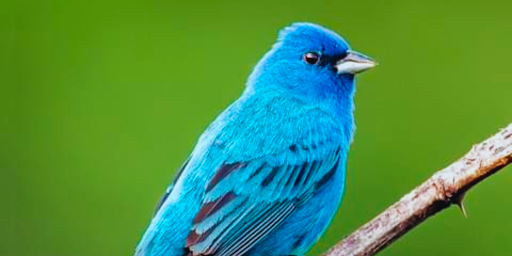The male Indigo Bunting, with its striking all-blue plumage, sings with exuberance, resembling a piece of sky taking flight. Often called "blue canaries," these birds boast dazzling colors and are widespread throughout eastern North America.
During late spring and summer, they fill the air with their lively songs.
Keep an eye out for Indigo Buntings in weedy fields and shrubby areas near trees, where they perch on the highest vantage point, singing from dawn to dusk, or search for seeds and insects amidst low vegetation. When they gather in groups, they create a spectacle, earning descriptions such as a decoration, a mural, or a sacrifice of buntings!

Indigo Buntings undertake nocturnal migrations, using stars as their guides. These birds possess an internal clock that allows them to continuously adjust their orientation relative to a particular star, even as it moves across the sky. After spending the majority of the winter in Florida, the Caribbean, and Central America, they disperse across the eastern United States and parts of Canada during the breeding season.
As youngsters, they learn their songs from neighboring males rather than their fathers. Indigo Buntings separated by a few hundred yards typically sing different songs, while those within the same "song neighborhood" share nearly identical melodies. A local song can persist for up to 20 years, gradually evolving as new singers introduce variations.
Although the sky-blue appearance of these birds may seem genuine, Indigo Buntings actually possess black feathers. It is the diffraction of light that gives them the mesmerizing blue coloration when seen up close. Depending on the lighting conditions, they may display a range of shades, from turquoise to black. The females, adorned in plain brown feathers, are less frequently seen but assume the crucial role of caring for the eggs and young.
These enchanting songbirds are unmistakable visitors to backyard bird feeders, and capturing their images instantly creates shareable moments. We would be thrilled to see your backyard sightings of Indigo Buntings!


0 Comments